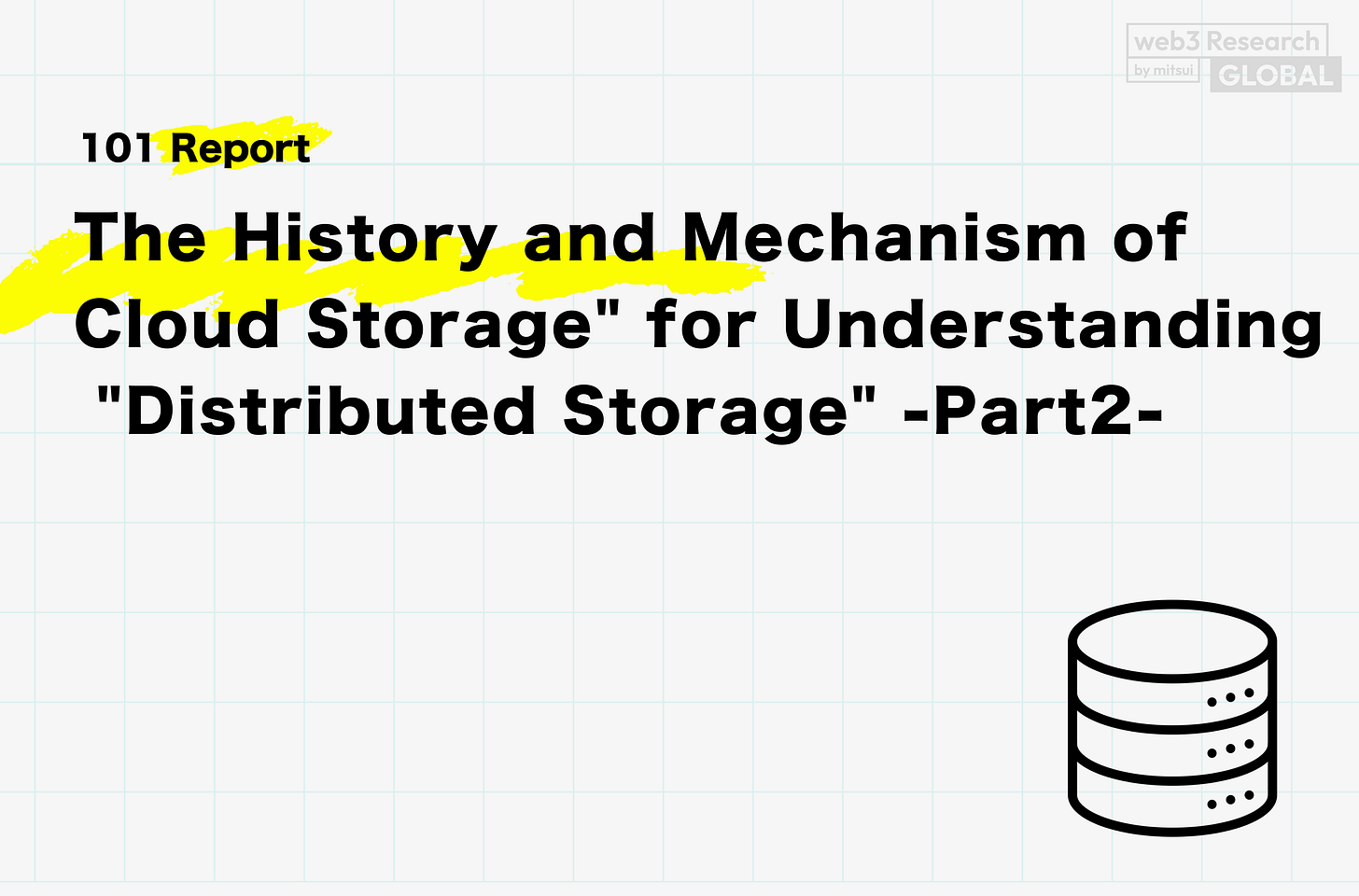The History and Mechanism of Cloud Storage" for Understanding "Distributed Storage"【Part 2】
An overview of distributed storage and the challenges it solves.
Hello.
Mitsui from web3 researcher.
Today is a basic report on the basics of web3"History and Mechanism of Cloud Storage" [Part 2] to understand "distributed storage" .
Please see to the end!
Introduction
Review of Part I: Cloud Storage IssuesWhat is distributed storage?
How typical distributed storage works
How does distributed storage solve traditionalHow does it solve cloud storage challenges?
Typical Use Cases and Examples of Distributed Storage
Distributed Storage.Current Challenges and Future Prospects
Introduction
In Part I, we looked in detail at how cloud storage came into being, why it became so popular, and what challenges it faces.The move from on-premise to the cloud has dramatically increased convenience and scalability, but it has also brought with it a variety of risks associated with centralized management structures, such as single-point failures, censorship risks, ambiguity of data ownership, bloated costs, and difficulties in dealing with national regulations.However, at the same time, various risks associated with centralized management systems are surfacing, such as single-point failures, censorship risks, ambiguity of data ownership, bloated costs, and difficulties in complying with national regulations.
In Part 2, we introduce "distributed storage," which is attracting attention as a hint as to how to overcome these limitations of cloud storage.
Specifically, we will delve into how distributed storage, which is considered one of the fundamental technologies of web3, can solve problems by storing and managing data based on a design concept that is completely different from a centralized structure.
While InterPlanetary File System (IPFS) and Filecoin are well-known as representative protocols, emerging protocols such as Walrus have emerged in recent years, and there is a movement to further advance decentralized storage in combination with incentive structures of blockchain and cryptographic assets (tokens).In recent years, emerging protocols such as Walrus have emerged, and there is a growing movement to further advance distributed storage in combination with blockchain and cryptographic asset (token) incentive structures.
In this article, we will take a step-by-step look at how these mechanisms work, as well as use cases for distributed storage, the challenges they face, and their future prospects.
Review of Part I: Cloud Storage Challenges
First, let's briefly review the cloud storage issues we sorted out in the previous section.
1. risks due to centralization
Single Point Failure
Because data is concentrated in large data centers, if that operator should fail, manyusers are affected at once.Censorship risk
Businesses and government agencies can control and block data access.Dependability
Users can easily be disadvantaged at the sole discretion of the cloud provider, such as service termination or changes in terms of use.
2. security and privacy issues
Ambiguity of data ownership and management authority
The actual server management will be outsourced to the cloud provider, and users may not have full control of their dataThe possibility of users not having complete control over their own data.Opacity of encryption and backup
Opacity as to who controls encryption keys and when they are deleted or backed up.etc.
3. bloated costs
Pitfalls of pay-as-you-go systems
The more usage, the higher the cost, and the larger the system the greater the burden.Data transfer volume challenges
Transfer fees tend to soar, especially when traffic is huge, such as global distribution. 4.
4. difficulty in complying with global regulations
Data Localization Issues
Each country and region has its own data storage locations and privacy laws, which can make centralized cloudIn addition, the data storage location and privacy laws are unique to each country or region, so operating in a centralized cloud is likely to be complicated.
As a result of these challenges, there is a growing expectation that distributed infrastructure without a central administrator will be responsible for data management in the next era.
What is Distributed Storage?
Basic concept: decentralized data management without central administrator
The most important feature of distributed storage is that "data is not consolidated on a single server or business, but is distributed and stored on multiple nodes (participants) around the world.



